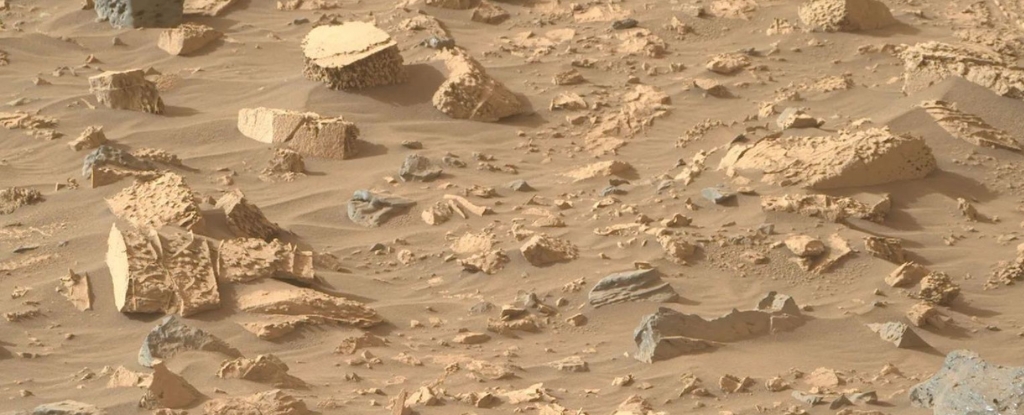NASA’s Perseverance Rover has left Mount Washburn behind and arrived at its next destination, Bright Angel.
There he found an unusual type of rock that scientists are calling ‘popcorn rock’. The strange rock is more evidence that water was once present in Jezero Crater.
The Perseverance mission is focused on life on ancient Mars. Along with searching for fossilized evidence of ancient life, it is searching for and trying to understand environments that might have supported life.
That’s why it’s located in Jezero Crater, an ancient paleolake with a sediment delta and other intriguing geological features.
On Sol 1175 of its mission, Perseverance arrived at Bright Angel, a scientifically interesting region that is part of the river channel that fed into Jezero Crater.
Bright Angel stands out for its light-toned rock outcrops that are either ancient sediments that filled the channel or much older rock exposed by the river.
The image below shows the rover’s path leading to Bright Angel. The white part shows where the Persistence is parallel to the Neretva Vallis river channel, and the blue part shows where it traveled through the channel.
Bright Angel’s light-toned rocks are clearly visible.

As Persistence worked toward Bright Angel, mission personnel could see light rocks in the distance. But the road to the new destination was not easy. The rover encountered a rocky field that proved so troublesome that the operators changed course.
“We started parallelizing the channel at the end of January and were making pretty good progress, but then the boulders got bigger and more numerous,” said Evan Graser, deputy director of Persistence Path strategic planner at the Jet Propulsion Laboratory. of NASA in Southern California.
“What had been driving an average of over a hundred meters per Martian day dropped to just tens of meters. It was disappointing.”
Persistence has two modes of travel. In rougher terrain, the path planning team uses imagery to plan the rover’s path about 30 meters at a time. To travel further than that on a single sol, the team relies on Perseverance’s autopilot mode, called AutoNav.
But as the road through the boulder field became more difficult, AutoNav struggled. Sometimes it just stopped, which is the safest option. But that meant the journey to Bright Angel was taking much longer than expected.
“We had looked at the river channel just to the north as we went, hoping to find a section where the dunes were small and far enough apart for a rover to pass between — because dunes are known to eat Mars rovers,” Graser said. . .
“The stand also needed an access ramp that we could safely travel down. When the images showed both, we made a beeline for it.”
The rover was redirected through the dune field and along the river channel, reducing its drive by several weeks.

The persistence is nearing the end of its fourth science phase. It has been looking for carbonate rocks and olivine in the Margin Unit, which is along the interior of the Jezero crater rim. But at Bright Angel, he hoped to find different rocks.
This is exactly what happened.
According to a NASA press release, geologists were amazed by what they saw. Some of the rocks are densely packed with spheres, which gave them the name ‘popcorn rocks’.

The rocks are also full of ridges that look like mineral veins. Mineral veins occur when water transports minerals through rocks and deposits them.
Mineral veins are common on wet, watery Earth, and rovers have spotted them elsewhere on Mars.
Popcorn properties can also be evidence of water. Like mineral veins, they show that water flowed through these rocks.

The next step is to determine what minerals are present in these popcorn rocks. Perseverance will go towards the bright Angel, taking measurements as it goes.
At the weekend, it will use its abrading tool and other instruments to take an even closer look. It will vaporize some of the rock and use its SuperCam instrument cluster to examine the rock’s chemistry.
The decision to take a sample for eventual return to Earth will (hopefully) be based on those results.
After the Bright Angel Persistence ends, the rover will make its way south again, through Neretva Vallis, to its next destination: the Serpentine Rapids.
This article was originally published by Universe Today. Read the original article.
